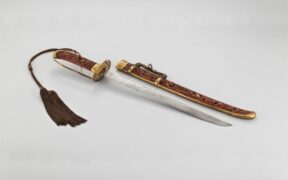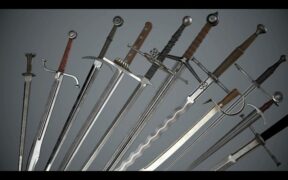Our content features commercial links to our products, committed to transparent, unbiased, and informed editorial recommendations. Learn More
7 Filipino Sword Types and Their Use in the History
NO AI USED This Article has been written and edited by our team with no help of the AI
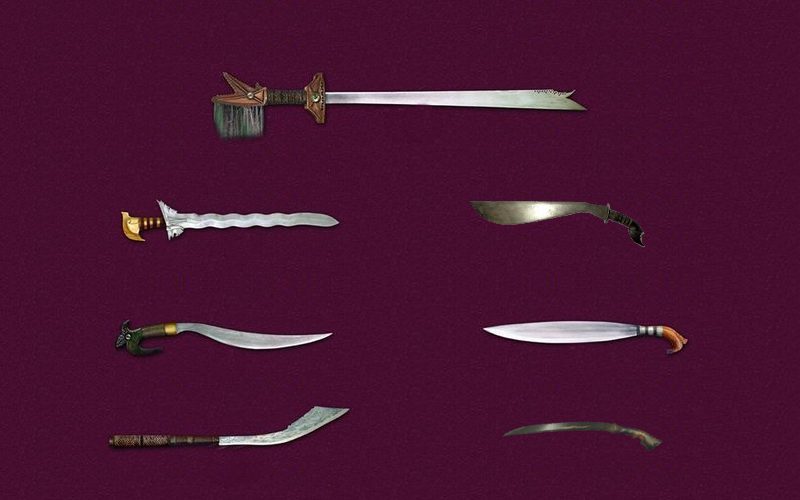
The Philippines has several ethnic groups that use a variety of swords that vary in regional design and characteristics. Traditional Filipino swords served as formidable weapons on the battlefield, status symbols, and farming implements. Many of them remain relevant among certain Muslim tribes and sword collectors today.
MAIN TAKEAWAYS
- Filipino swords, reflecting Southeast Asian cultural influences, served multiple roles including weaponry and status symbols.
- These swords vary in design and purpose, with some specialized for close combat and others used historically in significant battles.
- They were notably used in key historical events, such as resisting foreign invasions and during World War II.
Different Types of Filipino Sword
Many Filipino swords have shared heritage among Southeast Asian neighbors like Malaysia, Indonesia, and Brunei. The most popular are the weapons of the Moro—the Muslim peoples of the southern Philippines. Many served as slashing and thrusting weapons while others were only efficient for chopping. Sword names may also vary depending on the language or dialect of the region.
1. Bolo
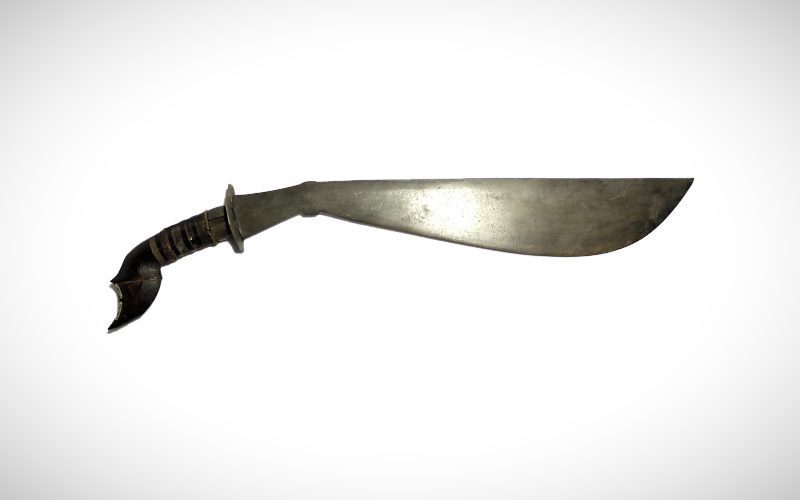
The Spanish name bolo is a generic term used to refer to several bladed weapons, especially those that function as a chopping knife like a machete or an agricultural tool. The cut-and-thrust weapon has varying blade shapes, ranging from broad to sharp and pointed varieties.
The bolo became popular during the Spanish-American War when Filipino bolo battalions wielded them. Often depicted with a bolo in his hand, Filipino hero Andres Bonifacio, founder of the 19th-century Katipunan revolutionary society, led the revolt of August 1896 against the Spanish.
The bolo remains the widely used farming tool throughout the northern Luzon islands and Visayas. Visayan bolo sometimes feature an ornamented handle, usually a carving of clan symbols in the form of a human face. Also, the so-called tenegre have strange heads, from deities to bats and lions.
2. Barong
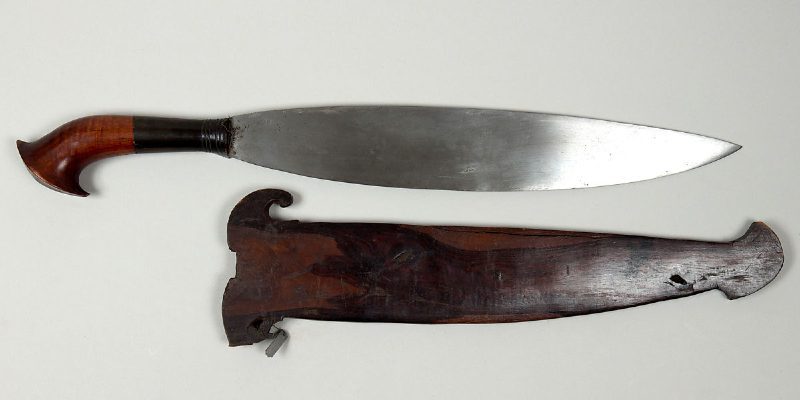
Most recognized for its leaf-shaped blade, the barong served as a slashing weapon in close-quarter combat among Tausug, Yakan, and Samal warriors. It is short, single-edged, and resembles a bolo, hence the name, barong–bolo. It usually ranges from 40 to 45 centimeters long or can be even longer.
The barong was also a part of the traditional Moro attire. The Moro people, especially the datu or chief of Muslim tribes, sultans, and other officers of political rank, carried the blade in a flat wooden scabbard, tucked in the front of their waist cloth called sarong. It lacks a sword guard and has a simple pommel for fighting, but those for ceremonial use have elaborate pommel designs.
3. Kampilan
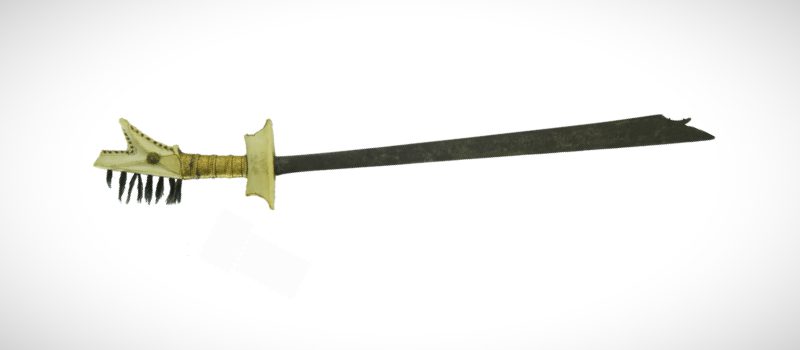
A single-edged, dual-pointed sword, the kampilan was a favorite fighting weapon of the Moro. Believed to have origins from Borneo, it is not essentially a Filipino weapon. The Dayak people of Borneo believe that toh, a powerful ghost-soul, resides in the human head. In the past, acquiring an enemy’s head in battle was a symbolic act of reconciliation, bravery, and revenge. The kampilan was the preferred weapon for head-hunting in the southern Philippines.
4. Kris
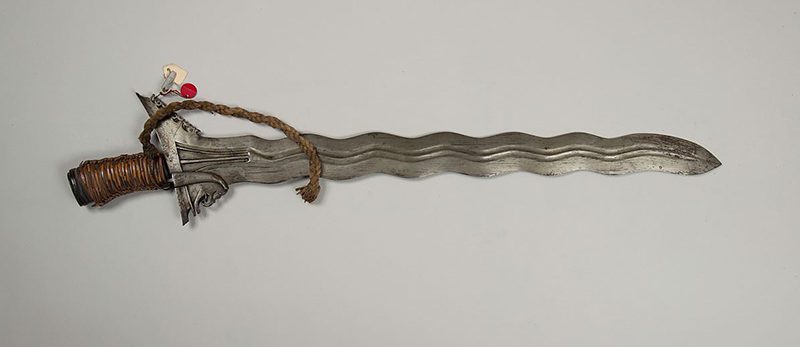
Also spelled as keris or kalis, the kris is most recognized for its wavy blade. It is popular throughout Malaysia, Indonesia, and southeastern Asia. The kris has supernatural connotations in Malayan culture, as the Malay believe that some blades bring good or bad luck. In the Philippines, it is practically unknown except to the Moro of Mindanao and the Sulu Archipelago.
The Tausug, Yakan, and Samal tribal warriors wielded the kris single-handedly for thrusting and slashing. Those with a straight or slightly curved blade are sometimes called terciada. There are also krisses found in the Visayas, but they are often inferior to those from Mindanao and Sulu. The sword served as a badge of leadership on the battlefield and a display of rank and wealth.
5. Talibong

A type of executioner’s sword, the talibong has a heavier blade than most Filipino swords. It generally has a double curved blade mounted on a long handle and has an overall length of about 115 centimeters. Unlike other swords, the talibong is a two-handed sword with a plain, heavy wooden grip.
6. Panabas
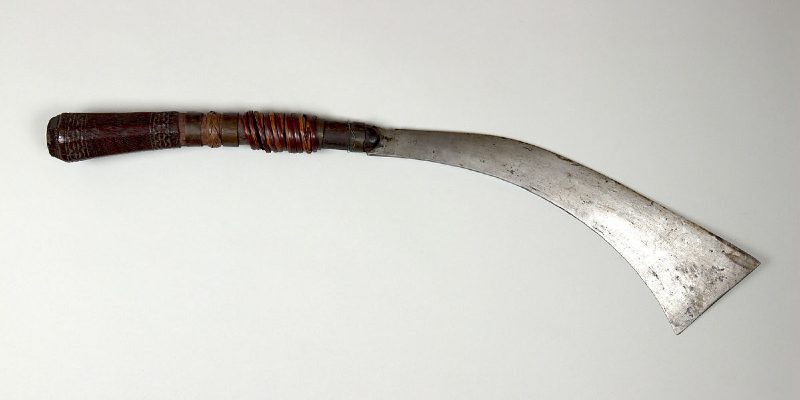
Used solely for chopping, the panabas has a wide metal chopping blade which seems to be a hybrid of an ax and a sword. It is the widest near its tip and bends backward toward the long handle which serves as a counterweight for the heavy blade. Its grip is usually wrapped with braided rattan. The weapon is popular among the Moro people of Mindanao and the Sulu Archipelago.
7. Ginunting
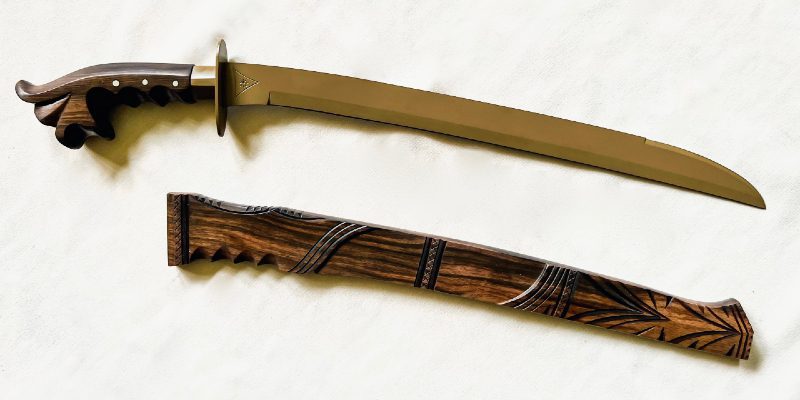
One of the weapons issued to the Philippine military special forces, the ginunting is a thin and lightweight blade efficient for close-quarters combat and navigating thick jungle terrain. The term ginunting comes from the Tagalog word gunting, meaning scissors, a reference to the inward curve of the blade design.
Characteristics of Filipino Sword
Filipino swords often have regional differences, but the most popular types are perhaps the bolo, kris, and kampilan.
Here are the unique characteristics of Filipino swords:
Metal and Construction
Nothing was standardized in the Philippines, as the blacksmiths or panday made weapons for individuals, not armies. Today, the finest Filipino bolos are manufactured in Mindanao, where Muslim Filipino swordsmiths make them by hand and temper their blades. Kris blades are also forged from finely tempered steel of different grades.
Blade Appearance
Filipino swords vary in blade shapes and craftsmanship, depending on their origin.
Decorative Blade
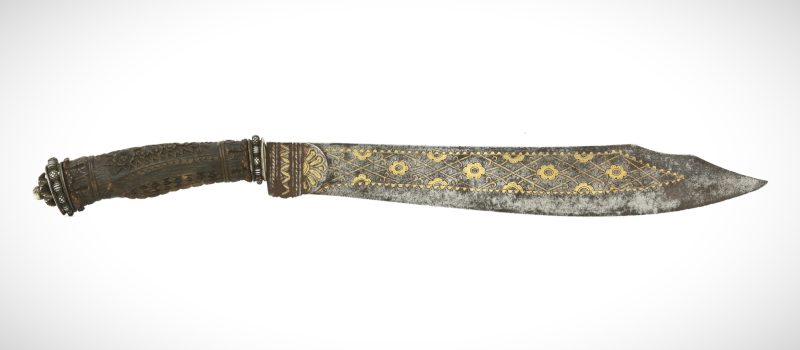
Some bolo blades have a sharp edge for slashing and a thrusting tip, while others have wide blades. There are also ones with clipped points and scalloped back profile, similar to some Chinese blades. Designed for agricultural use, they are generally rough or unpolished. Philippine bolos of outstanding craftsmanship, especially those inlaid in brass, are rare.
Straight and Wavy Blade
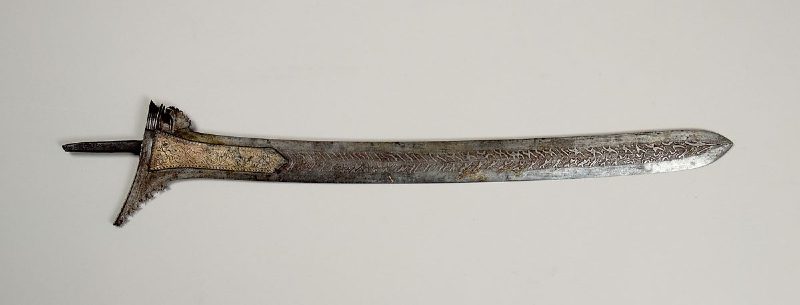
Kris blades are always double-edged, but can be completely wavy, straight, or in a combination—straight at the top and wavy at the bottom. Most of the time, the shape and number of waves can determine their regional or ethnic origin. Its blade features notches to catch an opponent’s blade.
Double Pointed Blade
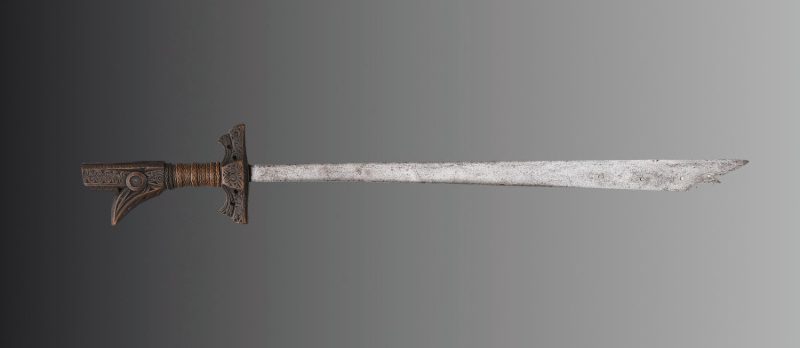
The Philippine sword kampilan has a long, straight, single-edged blade. It is narrowest near the handle but widens near the tip and often features a small spike. The blade is usually thin, without ridge or fuller, but sometimes decorated with notches, holes, metal inlays, and floral etchings.
However, its tip design has regional differences. While Muslim versions generally feature spikes at the tip, ones from Maguindanao are massive and triangular. On the other hand, Tausug versions are open-mouthed V-shaped.
Size and Length
Bolo widely varies in size, with blade lengths ranging from 31 to 50 centimeters and sometimes longer. The kris varies in size and can be considered a sword or a dagger. While the Muslim Filipino swordsmiths retained the traditional shape of the kris, the Moro kris generally has a longer blade, about 46 to 64 centimeters.
The long sword of clans in Mindanao, the kampilan usually had a blade length of around 50 to 75 centimeters long and a handle length of about 28 centimeters long. However, the length of the kampilan usually depends on the height of its owner.
Sword Mounting
The ornamentation of Filipino swords also varies depending on region and individual preferences.
Bolo Mounting
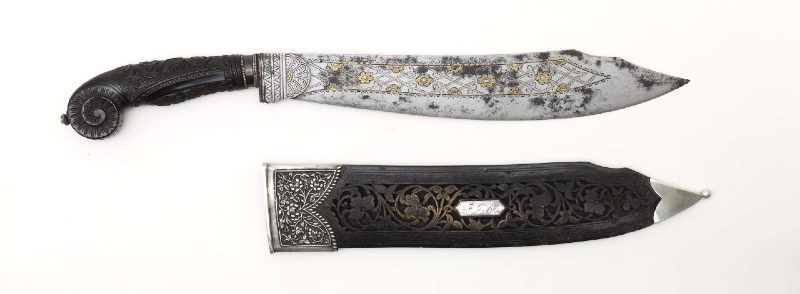
Bolos designed as utilitarian weapons are plain and simple. However, rare examples had handles and scabbards of buffalo horn. The floral carving on the handle and openwork horn scabbard reflect the craftsmanship of its artisan.
Kris Mounting
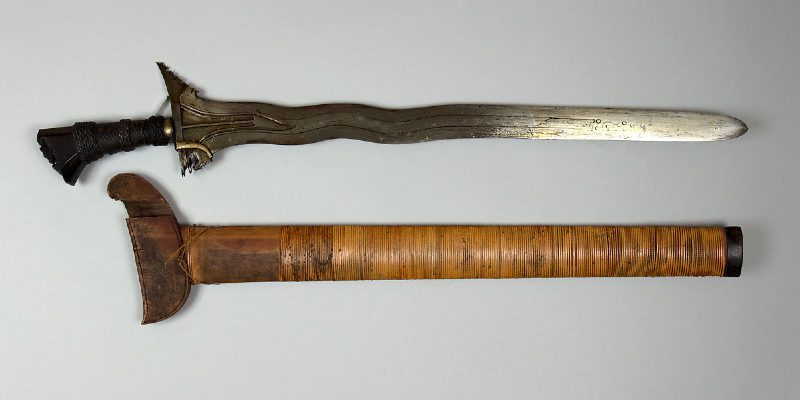
The kris usually has a carved handle, sometimes with mother-of-pearl, and a wooden scabbard covered with fine rattan. The pommels may also be made from hardwood, antler, shell, and bone, stylized into a horse-hoof design. Kris blades typically widen near the handle, forming a built-in sword guard. While older types have sword guards fitted to the base of the blade, modern reproductions have guards welded to the blade.
Kampilan Mounting
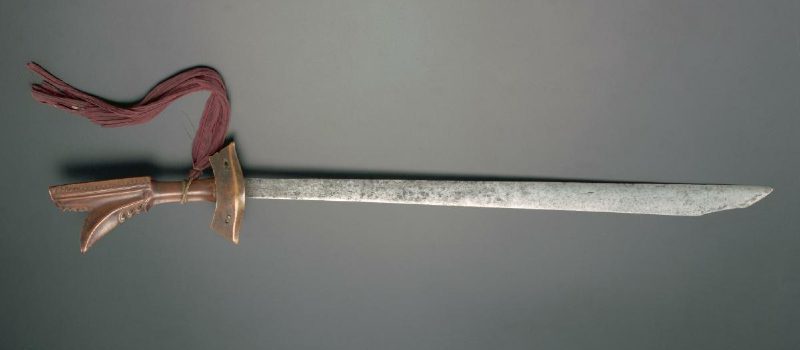
The kampilan usually has a large carved hilt, forked-shaped pommel, and wooden crossguard. It sometimes features a red or black-dyed bunch of hair or red lashing to prevent the sword from slipping from one’s hands.
Usually found without scabbard, the kampilan could be wrapped with a sheet of bark or two pieces of wood bound with rattan string. The breakaway scabbard construction allowed the wielder to draw his sword and slash in one motion.
History of Filipino Swords
The Filipino warriors refined their swords for hand-to-hand combat and wielded their bolos, krisses, and kampilans against invaders.
Origin of Traditional Filipino Weapons
Many believe Filipino swords were brought to the archipelago from Malaysia and Indonesia. However, archeological records suggest that iron weapons like swords, bolos, daggers, and knives were already in use long before the arrival of the first Malays and Indonesians in the Philippines. Rather than developing their own smelting and forging process, Filipino swordsmiths likely perfected the use of the Malay forge and were adept in crafting several weapons and tools.
In the Colonial Period
At the Battle of Mactan in 1521, the warriors of chief Lapu-Lapu killed the Portuguese explorer Ferdinand Magellan. They wielded their kampilan swords, spears, and other weapons. Lapu-Lapu is considered the first Filipino hero who defeated a Western conqueror. Despite the victory, the battle established Spain’s discovery of the Philippines.
Spain later sent several expeditions to Southeast Asia. By 1578, the Spanish conquistadors initiated raids on the southern Philippines in hopes of conquest and conversion to Catholicism. However, Spain’s intrusion into the Moro’s religious beliefs led to holy wars called jihad. The Moro defeated them using their barong and kris.
In World War II
When Japan invaded the Philippines in 1941, it had already taken control of most of the country by the following year. The Filipinos used bolos in close-quarters combat with the Japanese soldiers. With the help of the Filipino bolo battalions, the United States armed forces led by General Douglas MacArthur successfully recaptured the country by 1945.
Filipino Swords in Martial Arts
The ancient Filipino martial arts utilized Indonesian and Malaysian swords, like the kampilan, barong, and kris. These slashing and thrusting swords were coated with poisons before hand-to-hand combat. Many believe that the kampilan and the barong were originally weapons of the Dayak people of Borneo, and the Moro people of Mindanao adopted them as national weapons.
In Filipino martial arts and folk performances, practitioners initially used blunt sticks to demonstrate sword movements. Over time, many martial arts evolved using the so-called eskrima sticks or arnis which have techniques that cannot be performed with a sword. By 1966, the classical Filipino martial art escrima was also introduced to the United States.
